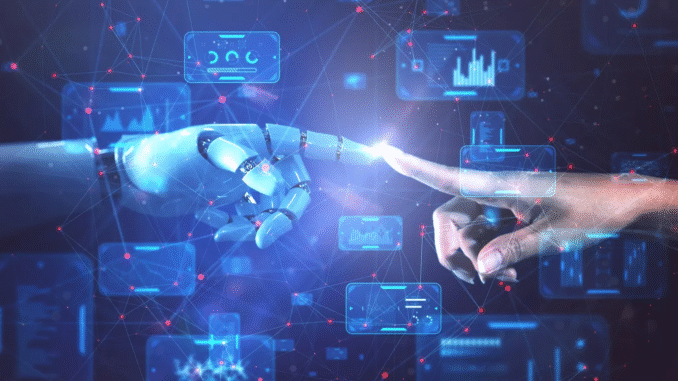
Technology continues to evolve at a rapid pace, transforming the way we live, work, and connect with the world. As we step into 2025, emerging tech trends are not only making our lives more convenient but also reshaping industries, economies, and society at large. From artificial intelligence to immersive experiences, the future is arriving faster than ever.
In this article, we explore the top 10 tech trends in 2025 that are set to revolutionize our daily lives. Whether you’re a business leader, student, or tech enthusiast, these developments are worth keeping an eye on.
1. Artificial Intelligence (AI) Everywhere
AI is no longer limited to labs or large enterprises. In 2025, AI is becoming embedded in everyday tools — from smartphones and home appliances to cars and healthcare systems.
Key examples include:
- Smart assistants that offer personalized suggestions.
- AI-driven healthcare diagnostics.
- Real-time language translation.
AI is also powering automation in customer service, marketing, finance, and logistics, increasing efficiency and reducing operational costs.
2. The Rise of Generative AI
Beyond traditional AI, Generative AI — like ChatGPT, DALL·E, and others — is making content creation faster and more accessible. In 2025, this tech is used to generate:
- Articles, marketing copy, and reports.
- Digital artwork, video, and music.
- Code and software prototypes.
This democratization of creativity is enabling individuals and small businesses to produce professional-grade content without large budgets.
3. Quantum Computing Advances
Quantum computing is no longer a futuristic dream. In 2025, companies like IBM, Google, and startups are making significant progress in developing commercially viable quantum systems.
Why it matters:
- Quantum computers can solve complex problems much faster than classical computers.
- Industries like pharmaceuticals, finance, and cybersecurity stand to benefit immensely.
- New encryption methods will be required to handle the power of quantum decryption.
While full-scale adoption may still be a few years away, 2025 marks a turning point in quantum development.
4. Hyper-Personalization Through Data
Thanks to big data and machine learning, hyper-personalization is becoming the new standard. From shopping experiences to education and entertainment, everything is becoming tailored to the individual.
Examples include:
- Personalized learning platforms that adapt to student pace and style.
- Streaming services curating unique content feeds.
- Retailers using AI to recommend products based on browsing history and preferences.
Consumers in 2025 expect brands to know what they want—before they ask for it.
5. 5G and the Path to 6G
5G networks are already reshaping mobile connectivity, but 2025 brings us closer to 6G technologies. The impact of ultra-fast internet is far-reaching:
- Real-time gaming and streaming without lag.
- Seamless integration of smart devices in homes and cities.
- Reliable communication for autonomous vehicles and drones.
With 6G expected to emerge by the end of the decade, the groundwork laid in 2025 is critical for global infrastructure and innovation.
6. Smart Cities and IoT Expansion
The Internet of Things (IoT) is powering the development of smart cities, where devices, vehicles, buildings, and infrastructure communicate to improve efficiency and safety.
Smart city applications include:
- Real-time traffic and public transportation systems.
- Automated waste management and smart lighting.
- Air quality monitoring and disaster response.
In 2025, IoT devices are more affordable, interconnected, and secured, making urban living more sustainable and responsive to citizens’ needs.
7. Extended Reality (XR): AR, VR, and MR
Extended Reality (XR) — which includes Augmented Reality (AR), Virtual Reality (VR), and Mixed Reality (MR) — is making significant strides in 2025. These immersive technologies are revolutionizing industries such as:
- Education: Virtual classrooms and hands-on simulations.
- Healthcare: Surgical training using AR overlays.
- Retail: Virtual fitting rooms and product demos.
- Gaming and Entertainment: Hyper-realistic immersive experiences.
With the increasing availability of lightweight XR headsets and apps, more people are integrating immersive tech into their daily routines.
8. Green Tech and Sustainable Innovation
Sustainability is no longer optional. In 2025, green technology is a leading driver of innovation. Governments and companies are adopting eco-friendly solutions to meet climate goals and consumer expectations.
Key green tech trends include:
- Solar and wind energy innovations.
- Electric vehicles with extended range and faster charging.
- Smart buildings that reduce energy waste.
- Carbon capture and water purification technologies.
Technology is becoming a powerful ally in the global fight against climate change.
9. Cybersecurity in the Age of AI and IoT
As more devices connect to the internet, cybersecurity becomes increasingly critical. In 2025, advanced threats require advanced defenses.
Emerging cybersecurity trends:
- AI-powered threat detection and response systems.
- Biometric authentication (facial recognition, fingerprints).
- Decentralized security models using blockchain.
- Zero Trust Architecture to secure sensitive data.
Both individuals and businesses must prioritize cybersecurity to protect privacy and prevent cyberattacks in this increasingly connected world.
10. The Rise of the Metaverse Economy
Though still evolving, the metaverse is gaining traction in 2025 as a virtual space for work, social interaction, education, and commerce.
Key developments include:
- Virtual offices for remote collaboration.
- Digital real estate and NFTs (non-fungible tokens).
- Avatars and immersive social experiences.
- E-commerce and advertising in virtual worlds.
Major tech players are investing billions into metaverse platforms, creating a new digital economy that mirrors — and in some cases, surpasses — the physical one.
Final Thoughts
The year 2025 is shaping up to be a pivotal moment in technological evolution. From the way we communicate and work to how we heal, learn, and interact with the world, these top tech trends are more than conveniences—they are catalysts for profound change.
To stay ahead, individuals and organizations must:
- Embrace lifelong learning in tech-related fields.
- Remain agile and open to adopting new tools.
- Balance innovation with ethical considerations and privacy.
The future isn’t just coming — it’s already here. By understanding these trends, we can better prepare for a smarter, safer, and more connected world.